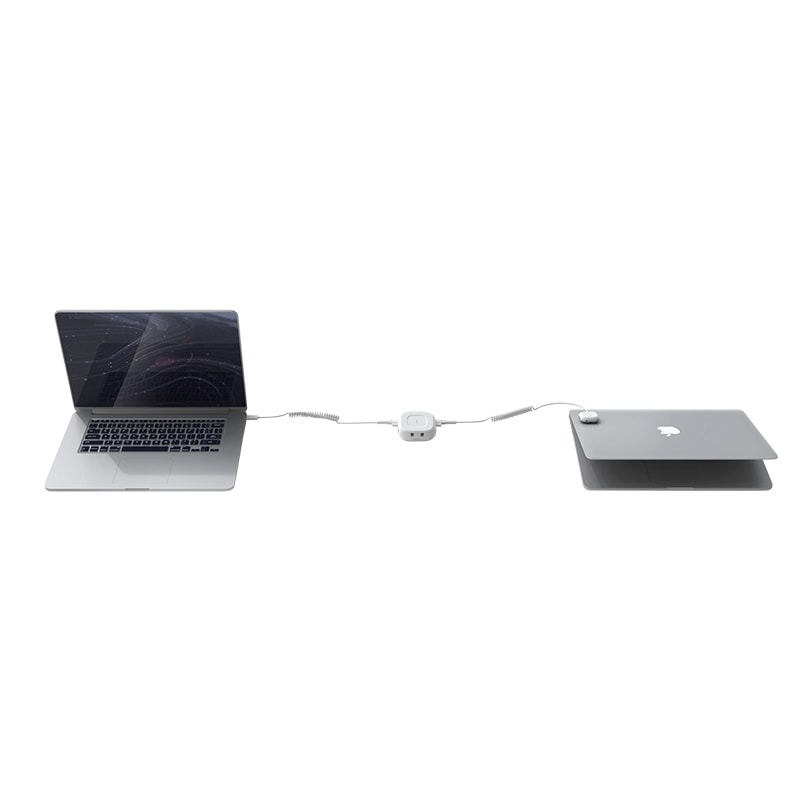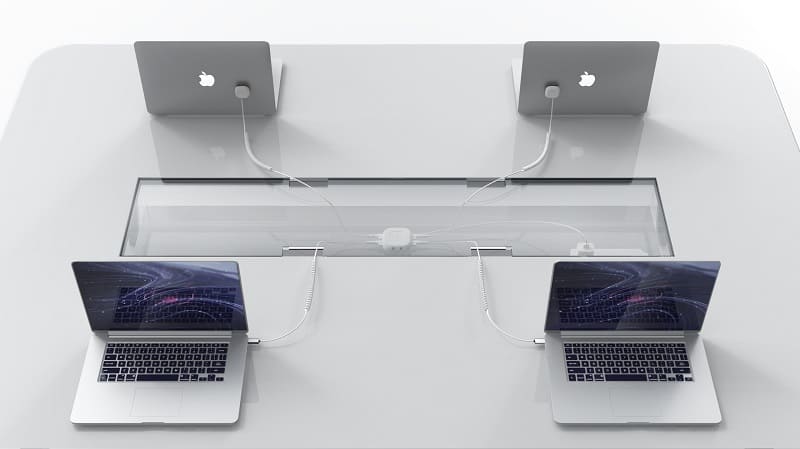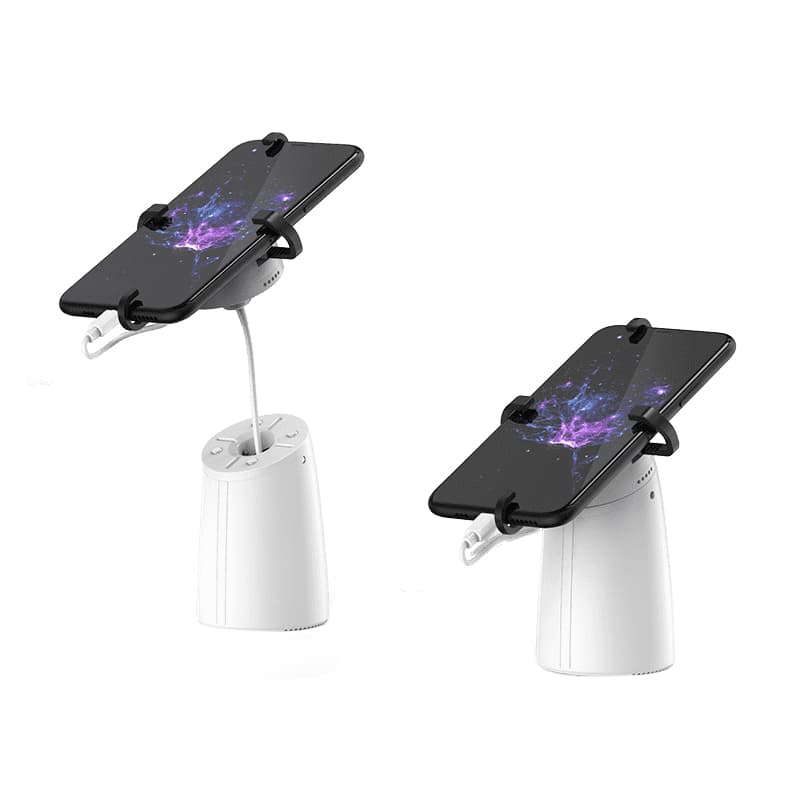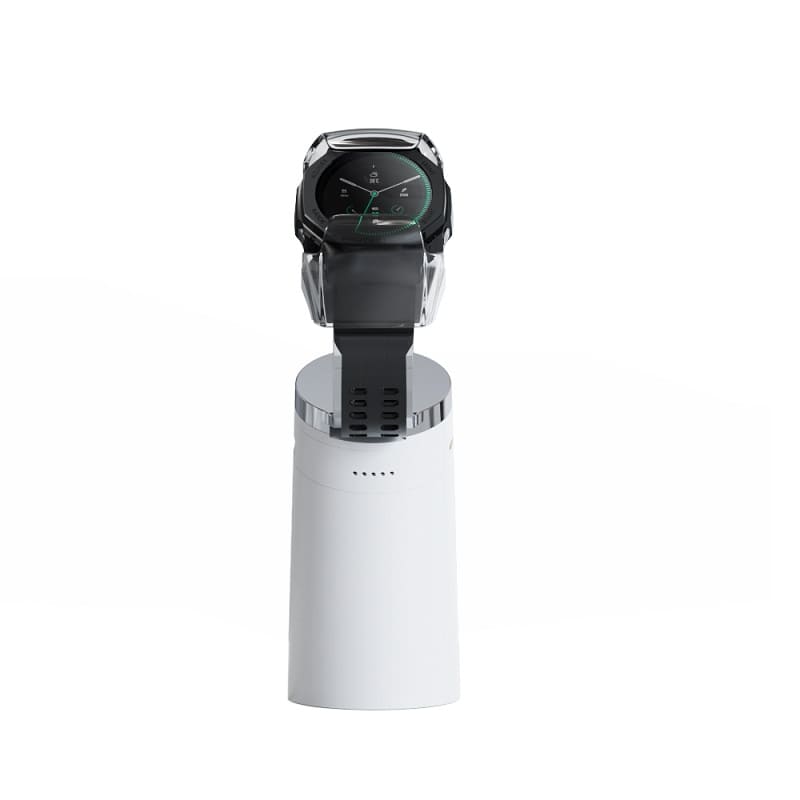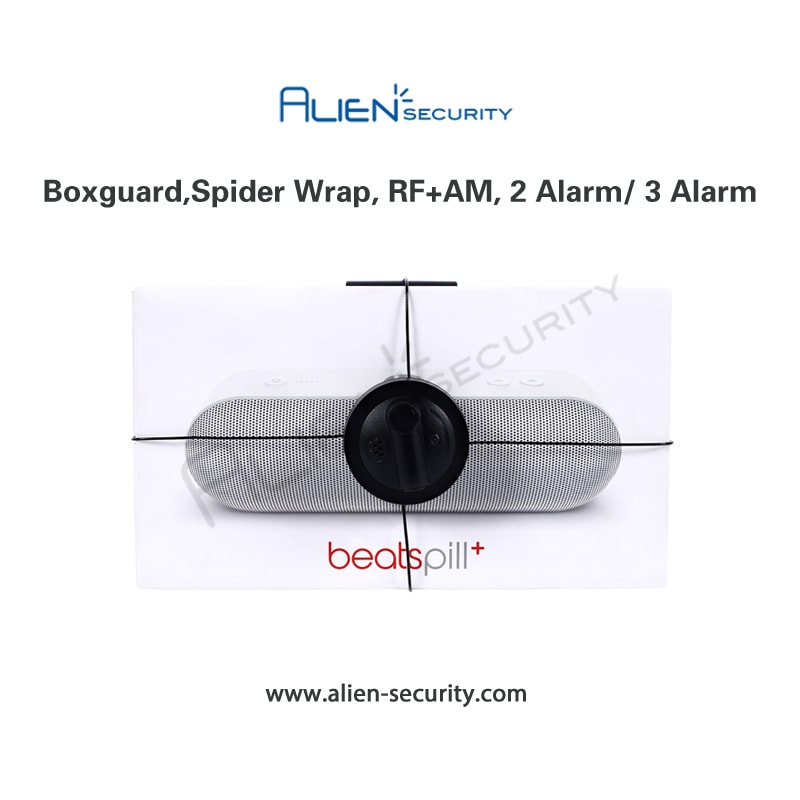The Spec
Multi-port4 alarm ports, secures up to 4 laptops at the same time
AccessoryUSB alarm cable, Type-c alarm cable are optional
AccessoryAlarm sensing stickers are optional
Installation:Can be installed on the desktop or under the display table
- 4-port under-counter hub secures up to four laptops simultaneously;
- Pull or cut? Instant audible alert—staff know exactly which position signaled;
- Minimalist counter—hub hidden below, only neat coiled leads on top;
- USB & USB-C alarm cable heads or a 3M adhesive sensor—mix and match per device;
- Coiled, anti-cut leads keep typing and screen rotation natural, then retract cleanly;
- Rows, wall bays, endcaps—chain hubs to scale long tables without redesign;
- Fast install with 3M pads or screws—typical positions done in minutes;
- Brand-agnostic & size-flexible (11.6″–18″), perfect for 2-in-1s and detachable keyboards;
- Optional extra lead to secure a keyboard or mouse alongside the laptop;
- Cut shrink, keep experience—open tryouts for customers, decisive response for your team;
- Harden hot spots by pairing one hero unit with S-LOCK while the rest stay on alarms;
- Simple routine—quick daily line check and one-touch reset after an alert.
4-ports Laptop Anti-theft security alarm device comes with optional USB alarm cable and security sensor sticker.
V-lock secures 4 laptops one time in store. This can greatly reduce the investment of retail stores, is a very cost-effective laptop anti-theft solution for retail store.
With 3M glue and screw holes at the bottom, the alarm mount of V-lock can also be installed in the space reserved for the display table or under the table to be hidden, creating a more concise display environment in the retail store.
A variety of USB laptop alarm cable,Type-c laptop security cable, and laptop anti theft alarm sensor sticker are optional. It provides security and theft protection not only for regular laptops, but also for split laptops and some new concept laptops or tablets. Such as Microsoft surface, Apple ipad and associated accessories.
In high-risk areas, it is good idea to equip an S-lock and use it with a V-Lock to defeat the rampant run-and-grab.
Thieves are becoming more violent and rampant in many countries and regions. So in such high-risk areas, electronic alarm system alone is sufficient. Because by the time you realize the theft has happened, the thieves have already run away with the stolen laptop. And in many cases, thieves work in groups. In this case, many burglaries happen at the same time, or one thief steals and runs away, so that more thieves can steal later.
In such high-risk areas, it is good idea to equip
laptop security mounting brackets S-Lock and use it with V-Lock to defeat theft
Combined with S-Lock, theft will be greatly reduced, or even disappear. Because it's not worth it for thieves to spend a lot of energy and time, take a lot of risk, and not succeed in stealing. For the gang of thieves, they will not steal here. They choose retail stores with low security.
